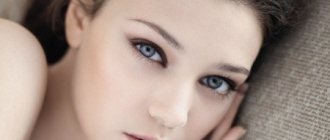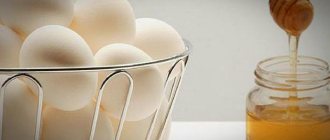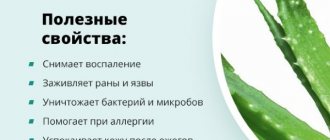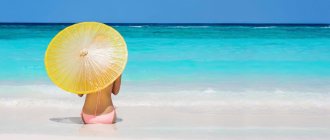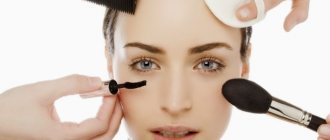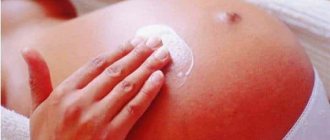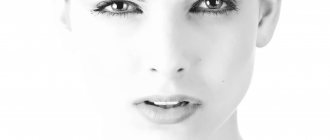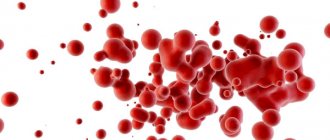Methods for preventing foot fungus, or athlete's foot, should be given special attention, otherwise you can get very unpleasant and dangerous consequences. From the skin of the foot, fungal micelles can easily spread to the toes and penetrate into the nail plates themselves, from where it will be far from easy to remove them.
Any fungus is dangerous due to its increased “survival” and the fact that it can easily be transmitted from person to person by contact. You should never neglect preventive safety measures, especially when it comes to foot fungus and leg fungus in general.
Symptoms of mycosis of the foot
Healthy hygiene – from childhood
By the age of three, a child can master simple self-care skills. Learn how to teach your child good personal hygiene.
- Redness of the skin of the foot. - Unpleasant smell. - Peeling of the skin. - The appearance of small bubbles or blisters. - Itching, especially in the folds of the skin. -White wrinkled skin between toes. If mycosis of the foot becomes chronic, the affected area resembles a moccasin in shape: redness and peeling cover the sole and side of the foot. Mycosis can also spread to the skin of the hands - if contact with the affected skin of the feet occurs constantly.
Diagnostics
The first stage of diagnosis is collecting anamnesis and clarifying the patient’s complaints. Next, the doctor conducts an objective external examination to identify fungus on the surface layer of the skin. Laboratory and instrumental methods for diagnosing mycoses include:
- Luminescent glow. Using a lamp of the same name, the doctor can detect fungal mycelium on the skin - it will give a bluish glow.
- Cultural seeding. This is the cultivation in special nutrient media of cultures found in scrapings from the skin or mucous membranes of the patient. It is carried out to confirm the fungus and identify the type of pathogen.
- Radiography. Used for deep fungal infections. Helps confirm fungus in the lungs by looking at dark spots in the lung area on an x-ray.
- Magnetic resonance and computed tomography (MRI and CT). Necessary for accurately determining the location and type of changes in internal organs.
How to get rid of foot fungus?
The best treatment for athlete's foot is prevention.
Observe the following rules: 1. In public locker rooms, wear sandals or easy-to-clean rubber slippers. Don't forget to wash them regularly with disinfectant. 2. Buy socks that wick away sweat easily (they are made from special materials), or a sufficient number of cotton socks. Change your socks regularly. As soon as you finish classes, immediately put on a clean pair. 3. Shoes that are damp from sweat must be dried before putting them on again. 4. Never wear someone else's shoes and socks. 5. For sports, purchase well-ventilated shoes that fit your size. 6. Wash and dry your feet thoroughly. The fungus loves a moist environment - it is difficult for it to infect dry skin. 7. Don’t forget that you need to wash your feet not only after playing sports, but also before going to bed and in the morning. Especially on hot summer days when you wear open shoes. 8. Do not wear winter shoes indoors for a long time. Always keep a spare pair of shoes at work. 9. Use special products against excessive foot sweating and treat your shoes with antibacterial sprays. Who lives in swimming pools?
In the pool you can pick up not only fungal infections, but also the human papillomavirus, which causes the formation of warts, various types of lichen and scabies. Find out more about how to keep your pool safe.
If the fungus has already affected your feet, be sure
to consult a dermatologist
and carefully follow his instructions.
Remember that the appearance of a fungal skin infection may signal a weakening of the immune system due to more serious diseases: HIV, diabetes, cancer. Never use antifungal agents without a doctor's prescription
, especially those intended for oral administration.
What are human fungal diseases
These diseases include a group of infections in which the human body becomes infected with a fungus. The pathogen can multiply on the body, face, limbs and even in internal organs, such as the lungs or intestines. There are different types of fungus that differ in their habitat:
- Zoophilous (Microsporum galinae, Microsporum nanus, Microsporum rivalieri, Microsporum persicolor). In this case, the source of infection with fungal diseases is domestic or stray animals.
- Geophilic (Microsporum gypseum, Aspergillus fumigatus and Aspergillus niger, Cryptococcus neoformans). They live only on plants or the ground. Infection with them is possible when working in summer cottages.
- Anthropophilic (Candida, Microsporum audouinii, Trichophyton rubrum, Trichophyton tonsurans, Trichophyton violaceum, Microsporum langeroni). Their habitat is only humans.
- Zooanthropophilic (Microsporum canis). They can live on both animals and humans.
- Actinomycetes, or radiant fungi. They are an intermediate link between true fungi and bacteria. Their habitat is cereals, including barley, rye, wheat, etc.
Causes
The main cause of such diseases is the proliferation of certain types of fungus on the skin or mucous membranes. In relation to humans, they are divided into two main types:
- Opportunistic or saprophytic: Mucor, Penicillium, Aspergillus. They cause endogenous infection, i.e. infection by them occurs from the inside. Such fungi reproduce only under favorable conditions, for example, when immunity is reduced.
- Pathogenic: Candida, Trichophyton, Dermatophyte, Cryptococcus, Microsporum. They enter the body from the environment, after which they begin to multiply, which is what causes mycoses.
Under favorable conditions, saprophytic fungi germinate into a vegetative form. In it they multiply, feed on substances from the body’s tissues, and form new spores. During this period, a fungal infection appears. You can get it in the following places:
- massage, pedicure or manicure room;
- baths;
- swimming pools;
- saunas;
- gyms.
The reproduction of the pathogen is accompanied by the release of its metabolic products. They cause general and local allergic or toxic reactions in humans. They manifest themselves in the form of inflammation and intoxication. Transmission of this pathogen is possible in the following ways:
- Nutritional. Infection occurs during a meal that contains fungal spores.
- Contact. A person can become infected through direct or indirect contact with a sick person. In the latter case, infection occurs through the use of shoes, clothing and other personal belongings of the sick person.
- Sexual. The infection is transmitted during sexual contact, and the source can be not only an already sick person, but also a carrier of the fungus.
- Airborne dust. Cryptococci and aspergillus can survive in the environment for a long time and enter the lungs by inhaling spores.
The main reason for the proliferation of opportunistic fungi is weakened local or general immunity. There are other risk factors for contracting fungal infections:
- insufficient hygiene;
- long-term use of antibacterial or aggressive soap;
- wearing tight shoes;
- disorders of the nervous and endocrine systems;
- HIV and other types of immunodeficiency;
- chronic infections;
- increased temperature or humidity of the environment;
- improperly performed hair removal;
- skin injuries;
- pregnancy;
- children or old age.
Classification
Certain types of fungi can penetrate to different depths of the skin or mucous membranes. Taking this factor into account, the following types of fungal diseases are distinguished:
- Superficial mycoses (keratomycosis): trichosporia, lichen versicolor, trichosporia nodosum (piedra). The fungus multiplies only on the skin or mucous membranes, without penetrating the internal organs.
- Dermatophytosis: epidermophytosis, microsporia, scab (favus), rubrophytosis, trichophytosis, faus. In such diseases, fungi are localized deeper in the skin.
- Deep mycoses: cryptococcosis, chromomycosis, penicilliosis, aspergillosis, sporotrichosis, histoplasmosis, blastomycosis, candidiasis. They are systemic diseases because the fungus in the body spreads to internal organs through the bloodstream.
- Pseudomycosis: erythrasma, actinomycosis, axillary trichomycosis. These diseases are caused by microorganisms that are found between bacteria and fungi - corynebacteria. With these pathologies, necrotic decay of tissues and organs with the formation of fistulas is possible.
Diseases of a fungal nature differ not only in the depth of penetration of the fungus. Another classification divides such infections into types depending on the place of reproduction of the pathogen. Taking this factor into account, the following are distinguished:
- Fungus of the scalp. These include microsporia and trichophytosis. Foci of infection in such diseases appear in the hair growth area on the face and head.
- Nail fungus - onychomycosis. The pathogen multiplies on the nail plates of the fingers or toes.
- Smooth skin fungus. Foci of inflammation are observed on the feet, palms and other parts of the body where there is little hair.
General recommendations
Prevention of fungal diseases and dermatomycosis can be primary and secondary. The first type of protective manipulation is aimed at reducing the risk of fungal infection. The second is aimed at preventing the recurrence of the disease caused by pathogens.
There is a high risk of infection with fungus in public places: swimming pools, beauty salons, clinics, etc. In addition, fungal diseases can be transmitted through families through household items, shoes, and clothing.
Emergency measures
If you come into contact with a fungus, you must immediately carry out emergency infection prevention. For this you can use antimycotic pharmacological agents.
Depending on how the contact occurred (wearing someone else’s shoes, visiting a swimming pool, bathhouse), you need to treat the feet and skin with lotion, spray or Mycostop deodorant; you can apply a special product, Neil Expert, to the nail phalanges. They will destroy the existing infection and provide adequate protection against the disease. If fungus comes into contact with shoes, they must also be treated with a special disinfectant spray.
Facilities
Polyenes - this pharmacological group includes:
- Pimafucin.
- Nystatin.
- Amphotericin.
They effectively fight all types of fungus, regardless of its origin. It also eliminates fungus from mucous membranes and internal organs.
Azoles – drugs of this group are:
- Mycozoral.
- Fluconazole.
- Irunin.
- Flucostat.
- Itrazole
They were synthesized in the laboratory, and in most cases are used to treat mycosis of the skin, mucous membranes, hair and nails.
Allylamines - which includes:
- Lamisil.
- Terbinafine.
- Exiter.
Very effective medicines for treating fungus. The main disadvantage is contraindications for patients suffering from renal or liver failure.
Indications for prophylaxis
There is a category of people who are more susceptible to the effects of fungus, so they are especially recommended to pay attention to the prevention of foot fungus. The risk group includes people with the following problems:
- immunodeficiency due to constant use of medications, steroids, infectious diseases,
- prolonged use of antibiotics or immunosuppressants,
- urinary incontinence, which creates a moist environment in the genital area,
- heavy sweating,
- prolonged exposure to tight or closed shoes.
Proper hygiene is the key to healthy feet!
Nail fungus is called a family disease because it can easily be contracted from people with whom you live under the same roof.
Members of the same family wash in a common bath or shower and can use the same washcloths, rugs, towels, and slippers. Fungal spores live on household items for years and are not easy to get rid of. If your family has fungus patients, the rules of prevention for you will be as follows:
- wash your feet every day with soap and dry them thoroughly;
- treat all surfaces that the patient’s feet come into contact with with an antifungal agent;
- do not share the same shoes with the patient;
- do not walk barefoot at home, wear socks or slippers;
- remove carpets from the floor;
- trim your nails in a timely manner and keep them clean;
- For each family member, purchase an individual manicure set;
- carry out wet cleaning daily using detergents with an antifungal effect, for example, Chemipharm Des New.
And, of course, insist that your relative treat the fungus under the supervision of a dermatologist.
General rules
Mycosis is a special form of life that lives in damp, warm places and also parasitizes living organisms. Why does he choose nails as his “home”?
The answer is simple - the nail forms a reliable protective layer from antiseptics and external irritants. They don't penetrate deep enough into the body for the immune system to fight it. To avoid contracting the disease, you need to examine your nails, hands and feet from time to time. Pay attention to symptoms such as:
- Itching and scabies . They signal the reaction of histamine receptors to an irritant.
- Redness . Indicates the onset of the inflammatory process in the epithelial layer.
- Wet skin . It speaks of a violation of the water-salt balance in certain areas of the skin. This happens because the fungus attracts moisture to create favorable conditions for itself.
- Salty skin . Your palms and fingers will taste salty. Due to the factor described above, the fungus synthesizes salt, which, thanks to the mechanism of osmotic pressure, upsets the balance. There is little salt inside, but a lot outside; the cells release water into the intercellular space, from where it makes its way out.
- Changing nail color . Yellowish or gray spotted formations are observed. These are fungal colonies that will eventually affect all the nails and skin around them.
Effective preventative drugs
The use of medications should be started if there is the slightest suspicion of fungal infection.
If a person suffers from excessive sweating of the feet, the course of medication must be repeated monthly.
Not only the skin, but also household items with which a person comes into contact every day can be treated with special preparations. When treating feet, it is necessary that the entire surface of the foot is exposed, including the heel and toe area.
The most effective means for the prevention of fungal diseases are “Lamisil”, “Mikostop”, “Bifosin”, “Loceril”, “Demikten”, “Batrafen”, “Mikozan”, etc. The drugs are sold in almost every pharmacy. Without a doctor's prescription.
To prevent fungal nail diseases, it is recommended to periodically use special varnishes. First you need to cut the horny plates short, rinse and dry them thoroughly.
Shoe disinfection
For foot diseases caused by fungi, it is necessary to regularly disinfect shoes. A solution of formaldehyde, acetic acid and a one percent solution of chlorhexidine are ideal for these purposes. It is very important to take precautions as some of the substances listed are toxic.
When processing shoes, you must follow a certain algorithm. First you need to wipe the insoles with a cotton swab or rag. Then a pair of shoes is placed in a bag along with a tampon soaked in the solution, tied and left for several days. Then, after the specified period, the boots or shoes are taken out of the bag and placed out of the reach of children, and allowed to dry thoroughly and ventilate. After two weeks you can safely wear shoes.
The processing procedure must be carried out at least once a month. Absolutely all shoes worn by a person infected with a fungal infection should be manipulated. In case of fungal disease of the upper extremities, you need to treat gloves and that part of outer clothing that comes into contact with the body.
Local treatment of toenail fungus with cream, spray, ointment
A variety of topical remedies are also widely used in the treatment of toenail fungus. Among them, it is worth highlighting drugs based on the active substance Terbinafine:
- Exifin cream;
- Gel, spray, cream Lamisil;
- Terbinafine ointment, cream, spray;
- Ointment, cream Terbizil.
Preparations based on the following active ingredients are also in demand:
- Oxiconazole (Antifungal agent for external use Mifungar);
- Ketoconazole (Nizoral Toenail Fungus Cream);
- Bifonazole (Cream for fungus Bifosin);
- Naftifine (Cream against nail fungus Exoderil);
- Sertaconazole (antifungal agent Zalain);
- Ciclopirox (Fungal cream Batrafen).
If the treatment was carried out in full, gave a positive result and the symptoms of toenail fungus disappeared over time, then the nail tissue affected by mycosis is replaced with healthy one.
However, to make sure there is no pathology, you need to confirm this with laboratory tests.
Thus, two weeks after the course of treatment for toenail fungus, and also after 30 days, it is necessary to take tests. You can calm down and breathe a sigh of relief after receiving negative results.
From now on, it will be necessary to carry out periodic self-monitoring.
In some cases, due to long-term therapy, peeling and redness may appear on the skin of the legs - this is an allergic reaction to the drugs.
Often, the fungal disease has already been cured, so you should take the scraping on time and complete the course in a timely manner.
Treatment of fungal diseases
Fungal infections are considered difficult to cure. A specific treatment regimen is selected taking into account the type of pathogen, location and severity of lesions. Treatment of a fungal infection in the body is aimed at suppressing the growth and reproduction of fungi. Additionally, measures are taken to eliminate the symptoms of the disease. For these purposes, the following groups of drugs are used:
- Antifungal or antimycotic: Fluconazole, Terbinafine, Ketoconazole, Miconazole, Nizoral, Nystatin. They have fungicidal and fungistatic effects, i.e. they suppress the proliferation of fungi and lead to the death of their cells.
- Immunomodulators: Viferon. This drug stimulates the immune system, so it is used when defense mechanisms are weakened.
- Sulfonamides: Streptocide, Biseptol, Co-trimoxazole. These antibiotics for fungal diseases are used to block the metabolism of the pathogen. They are often used in the presence of purulent-inflammatory processes on the skin.
- Antiseptic: Miramistin, Burov's liquid, tea tree oil, iodine preparations, Chlorhexidine. The active components of these drugs interact with fungal proteins, exerting an antifungal effect on them.
- Corticosteroids: Clotrimazole, Belosalik. They help cope with strong inflammatory reactions associated with the release of waste products of the fungus.
Article on the topic: Ointment for stomatitis for children and adults - review of effective drugs with description, composition and price
In the early stages of infections, treatment is carried out locally; in more advanced cases, systemic drugs are added. In the first case, sprays, solutions, ointments, gels, varnishes, and shampoos are used. External methods of therapy also include antifungal patches. For systemic therapy, oral tablets or capsules are prescribed. The treatment regimen is selected individually, taking into account the location and area of the lesion:
- for the treatment of mycoses of the scalp, keratolytic agents in the form of shampoos are used;
- to dry out weeping foci of infection on the skin, they are treated with iodine at night, and in the morning with salicylic ointment;
- in case of suppuration, the crusts are removed and also treated with salicylic ointment;
- for candidiasis of the genital organs in women, douching is done and antifungal suppositories or tampons are administered vaginally (they are moistened with herbal decoctions or medicinal solutions);
- in case of extensive damage to the nail, it is removed surgically.
Systemic drugs
Systemic agents include tablets and capsules for oral administration. They are not used at the early stage of the fungus and in small affected areas. In this case, local remedies are used, which have fewer side effects. If such medications do not cope with the fungus, then tablets are prescribed. They act on the pathogen from the inside. Examples of systemic antimycotics:
- Nystatin. This is a polyene antibiotic with antifungal activity. The drug increases osmolarity inside the fungal cell, causing its death. Indications for use: candidiasis of internal organs, skin and mucous membranes and its prevention after long-term antibiotic therapy. Dosage for oral administration – 500 thousand units 6-8 times a day for 14 days. Contraindications: pregnancy, hypersensitivity to nystatin, liver dysfunction, pancreatitis, gastric ulcer. Adverse reactions: vomiting, nausea, bitter taste in the mouth, abdominal pain, diarrhea, chills.
- Griseofulvin. Inhibits the processes of division of fungal cells, causing their death. Indications for use: onychomycosis, favus, trichophytosis, microsporia, epidermophytosis. Griseofulvin is taken orally with 1 tsp. vegetable oil. The dosage depends on the disease. Contraindications: porphyria, kidney and liver damage, diabetes mellitus, leukopenia, malignant neoplasms, pregnancy and lactation. Possible side effects: dyspepsia, headaches, dizziness.
- Orungal. Inhibits the synthesis of ergosterol in the wall of fungal cells, causing their death. Indicated for dermatomycosis, candidiasis, pityriasis versicolor, visceral deep candidiasis, onychomycosis, systemic mycoses. The dosage of Orungal is determined by the type of disease. Side effects and contraindications of the drug are numerous, so they should be clarified in the detailed instructions for it.
Products for external use
At the first stage, fungal diseases of the skin, mucous membranes or nails are treated through local therapy. Its advantage is that external agents act primarily in the area where the fungus is localized. At an early stage, this is a more effective treatment method. Examples of topical antifungal drugs:
- Lamisil. This is an ointment that inhibits the synthesis of sterols in the fungal cell. It is indicated for mycoses of the feet, smooth skin, inguinal athlete's foot, lichen versicolor, diaper rash caused by mold fungi. The ointment is applied 1-2 times a day to a thoroughly cleansed area of skin, affecting small healthy areas nearby. Treatment lasts 1–2 weeks. Contraindications: hypersensitivity to the composition of Lamisil. Side effects include possible allergic reactions at the site of application.
- Burov's liquid. Has anti-inflammatory and antibacterial effects. Indication for use: relief of inflammation on the skin and mucous membranes. In a glass of water you need to dissolve 2 tbsp. l. Burov's fluids. This solution is used to treat lesions 1-2 times a day. Contraindication: purulent infections. There are no adverse reactions.
- Nizoral. The active component of this shampoo disrupts the synthesis of ergosterol in the fungal cell, leading to its death. Indications for use: pityriasis versicolor, dandruff, seborrheic dermatitis. Shampoo is used while washing your hair: apply for 4–5 minutes, then rinse with water. The frequency of use depends on the disease. Contraindication – individual sensitivity to the composition of Nizoral. Side effects may include the development of erythema, irritation, contact dermatitis, burning sensation, and alopecia.
- Levorin. This ointment increases the permeability of the fungal cell membrane, stimulating its lysis. Indications for use of Levorin are desensitizing therapy for fungal infections of the epidermis, mucous membranes, and female genital organs. Problem areas should be lubricated 1–2 times a day for 5–7 days. Possible adverse reactions: severe itching, redness, irritation at the application site. Levorin is contraindicated in renal and liver failure, pancreatitis, stomach ulcers, pregnancy, lactation, acute diseases of the digestive tract, and high sensitivity to the composition of the drug.
- Salicylic ointment. For fungal infections, it is used as an addition to the main treatment. The ointment has antiseptic and anti-inflammatory effects. Indications for use: psoriasis, chronic eczema, ichthyosis, dyskeratosis, inflammatory skin diseases. Apply the ointment to the affected areas up to 3 times a day. After the procedure, skin itching, burning, and rashes may occur. The ointment is contraindicated in case of individual hypersensitivity to salicylic acid and in infancy.
Folk recipes
The effectiveness of folk remedies is noted only in combination with traditional therapy. You should consult your doctor about their use, as some ingredients in the recipes may cause allergies, which will worsen the condition. Examples of effective folk remedies:
- Mix equal proportions of yarrow, plantain, burdock leaves, and wormwood. Take 1 tbsp. l. collection, pour a glass of boiling water. Let the product brew, strain, and then pour into a bowl of moderate hot water. Soak your feet in the bath for 15–20 minutes. Repeat 2-3 times a day until the symptoms of the disease disappear. Instead of decoction of herbs, you can simply add 1-2 tsp to the water. soda The recipe is effective for foot fungus.
- Grind 3-4 cloves of garlic, add 2 tsp. butter, stir the mixture until a homogeneous consistency is obtained. Lubricate the affected areas daily before bed for 1 week.
- Take your shampoo, add 2-3 tsp to it. oregano oil, shake the container. Wash your hair with this product every day until the symptoms of a fungal infection of the scalp disappear.
